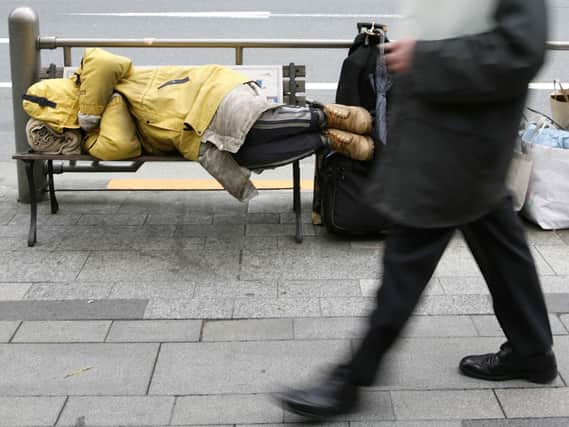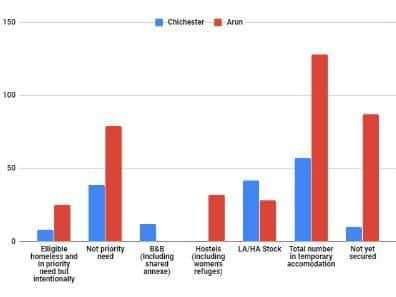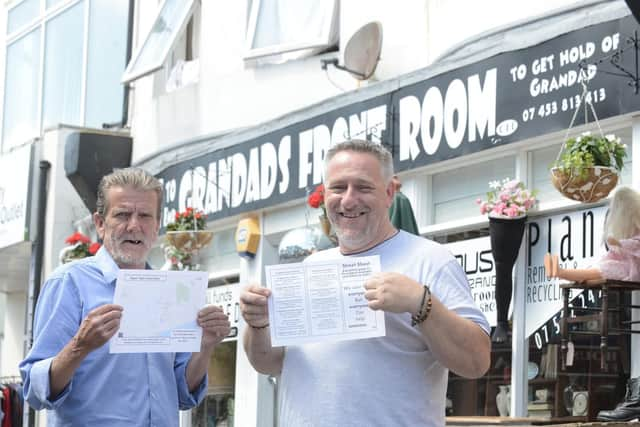Council outlines plans to '˜alleviate homelessness' as demand increases


The figures, released by the Ministry of Housing, Communities & Local Government, show that in the South East, the total number of people living in temporary accommodation in 2017/18 was 8,474 (up by 391 people from the previous year and 4,816 from 2010) and the total number of those living in B&Bs was 732.
Arun breakdown


Focusing specifically on Arun, a breakdown of the statistics (table 784) show there were 26 fewer people in temporary accommodation in 2017/18 than there were in 2007/08 (154 down to 128), zero were using B&Bs (a decrease of one since 2008) and there were also five fewer using hostels (37 down to 32).
Advertisement
Hide AdAdvertisement
Hide AdFurthermore, six fewer people classed as ‘intentionally homeless’ were ‘eligible homeless and in priority need’(31 down to 25).
However, the total number of ‘decisions’ made by the council involving people presenting as homeless had risen by 308 over the last ten years (430 up to 738) and 95 more people were ‘eligible (for support) but not homeless’ (335 up to 430). There had also been an increase of 83 people ‘not yet secured’ in accommodation (four to 87).
The number of homeless people per 1,000 households had also increased, with figures showing 0.9 people in 2007/8 compared to 1.79 in 2017/18 (up by 0.89). Since the previous year, 33 fewer decisions had been made (771 down to 738) and 36 fewer people had been classed as ‘eligible but not homeless’ (466 down to 430).


However, 21 more people were ‘not yet secured’ (66 up to 87) and 41 more people were in temporary accommodation (87 up to 128).
"The current demand for social housing outstrips supply"
Advertisement
Hide AdAdvertisement
Hide AdResponding to the findings, a spokesman for Arun District Council said: “Over the last ten years, nationally, there has been an increase in homelessness and the figures for Arun District Council reflect this trend.
"This can be attributed to national changes in social and welfare policy and the rising cost of housing across all tenures.
"The cost of living has increased and not kept pace with household incomes, along with rising housing costs. The current demand for social housing outstrips supply.
“As a council we are committed to preventing homelessness and have a new-build council housing programme to help alleviate homelessness. We have also recently acquired new temporary accommodation units to reduce the use of bed and breakfast facilities.”
Who is on hand to help?
Advertisement
Hide AdAdvertisement
Hide AdThere are many charities and schemes in and around the Chichester area that help the homeless, including Stone Pillow and Bognor Regis StreetSheet.
Founded in 1989 and now in its 29th year of operation, the homeless charity Stonepillow says it ‘provides a lifeline for homeless people with hubs, hostels and supported accommodation in Chichester, Bognor Regis and Littlehampton’.
On the charity’s website, it says in the past year, 208 people have accessed its services and 108 people have moved into a home of their own. It also says the charity employs more than 40 people but also relies on its ‘loyal team of volunteers’. Last month, the charity opened a new 24-hour hostel in Bognor and also made its Chichester hostel a 24-hour service.
Click here for some pictures of the new service in action.
Laura Bulbeck, from the charity, said: “Currently, the two most common reasons for people accessing our services are family and relationship breakdown and loss of private accommodation.”
Advertisement
Hide AdAdvertisement
Hide AdStonepillow said it continues to adapt ‘ways of working to meet the changing needs of clients and the economic landscape’.
Outlining the charity’s future plans, Stonepillow’s new chief executive, Hilary Bartle, said: “We are developing our five-year strategy, in consultation with clients, staff, volunteers and partners, to give clear direction for the future, which will be launched in 2019.
“We are committed to delivering services which meet the complex needs of those who are rough sleeping, homeless and vulnerably housed in Chichester, Bognor Regis and Littlehampton.”
The Bognor Regis StreetSheet is a practical guide on the support available for the homeless and where to find it. Its mission statement reads: ‘We can’t help everyone but everyone can help someone.’
Advertisement
Hide AdAdvertisement
Hide AdDanny Dawes, who runs the StreetSheet scheme, believes that there are ‘a lot more homeless people than the statistics show’ with ‘sofa surfers’ often not taken into account.
He said: “One thing not taken into account is the vulnerably housed. A lot of them are going to become homeless.” Vulnerably housed refers to people currently living in one’s own room or apartment but having been homeless or had two or more moves in the past 12 months.
Last year, the BBC reported that two-fifths of 16 to 25-year-olds in the UK have ‘sofa-surfed’ at one time because they had nowhere to live, and these ‘sofa surfers’ are not included in official homeless figures.
Comparison to Chichester
The figures for Chichester show there are significantly less homeless people than in Arun (see pictured bar chart) but Chichester District Council said more work needs to be done. In the city, 57 people were counted in temporary accommodation in 2017/18 compared to 35 in 2007/08, whilst 12 people have been living in B&Bs in 2017/18 compared to zero ten years ago.
Advertisement
Hide AdAdvertisement
Hide AdIn those ten years, the total number of homeless cases the council has made ‘decisions’ on has risen by 94 (84 to 178) and the number of people ‘not yet secured’ in accommodation has reduced by 28 from 38 to ten.
The number of homeless people per 1,000 households has reduced by just -0.01 in ten years (1.1 down to 1.09) and ten less people classed as ‘intentionally homeless’ are ‘eligible homeless and in priority need’ (18 down to eight), with 87 more people ‘eligible but not homeless’ (six up to 93).
Since last year, 25 more decisions have been made, 31 more people were ‘eligible but not homeless’ and just four more people were ‘not yet secured’ in accommodation, with 12 more people being put in temporary accommodation (45 up to 57).
Chichester District Council said: “We are committed to reducing homelessness in the district and we work with our partner agencies to help those who are homeless in our district get back on their feet.
Advertisement
Hide AdAdvertisement
Hide Ad“Changes to the Government’s homelessness policy means that we can now carry out more proactive work with potentially homeless people at an earlier stage.
“This will involve working with people on a one-to-one basis to look at all housing options, to ensure the correct benefits are being accessed as well as working with landlords. This includes helping people so they are able to remain in their existing accommodation, for example by negotiating with landlords or providing welfare benefit advice.
“We will also help households to access alternative accommodation, for example by providing help to access the private sector through our rent in advance and deposit scheme.
“We hope this work will help to reduce the numbers of people who are homeless in the district. We have a duty to assist families or individuals who have been made homeless and in some circumstances to provide temporary accommodation.”